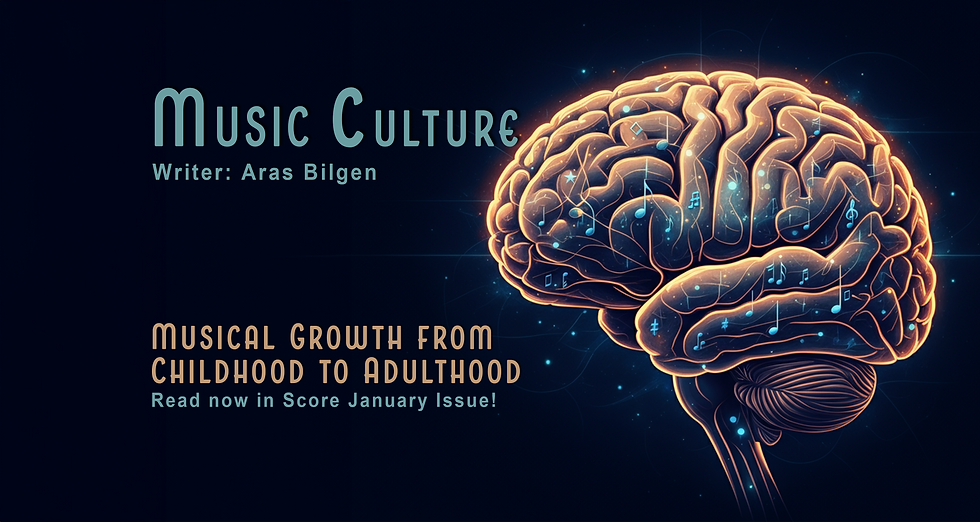Musical Growth from Childhood to Adulthood
- scoremagazinesliso
- Jan 7
- 3 min read
Updated: Nov 1
Writer: Aras Bilgen / January 2025
Music is often described as a universal language, transcending barriers and connecting people across the world. But the way we process and develop musical ability changes significantly as we age. By examining how kids and adults interact with music—both as listeners and creators—we gain insight into the unique capabilities of the human brain at different stages of life.
Children have a natural affinity for music. From infancy, they respond to rhythms and melodies, often moving their bodies instinctively to beats or vocalizing in response to sounds. This is not coincidental; the young brain is highly plastic, meaning it is more adaptable and capable of forming new neural connections than at any other stage of life. This plasticity makes early childhood a critical period for musical development. Mozart’s early age compositions are a famous example of childhood musical prowess. He started composing at the age of five, showcasing an innate talent nurtured by consistent exposure to music in his environment. Similarly, modern child prodigies, such as Alma Deutscher, demonstrate how early exposure to music education can result in extraordinary skills.
When children hear or make music, their brains are highly active. Studies using neuroimaging have shown that multiple areas of a child’s brain light up when engaging with music. The auditory cortex processes sound, the motor cortex is involved in physical responses, and the prefrontal cortex contributes to emotional and cognitive interpretation. This interconnectedness allows children to quickly learn musical skills, such as playing an instrument or recognizing patterns in music.
Moreover, musical training during childhood has been linked to improved cognitive abilities, including enhanced memory, attention span, and language development. The Suzuki method of music education, for example, leverages these capabilities by starting instruction as early as three years old.
Adults may not have the same neural plasticity as children, but they can still take a powerful approach. Adults often have a deeper emotional connection to music shaped by their life experiences. They can also approach music learning with more focus and discipline.
In adults, the brain processes music differently due to the maturation of neural pathways. The prefrontal cortex, which governs complex decision-making and emotional regulation, plays a more prominent role. Adults are better able to interpret the emotional nuances of music and may find it more meaningful.
However, learning new musical skills as an adult can be challenging. The brain’s reduced plasticity means that forming new habits, such as mastering an instrument, requires more time and repetition. Yet, this process can be deeply rewarding, as it stimulates neurogenesis (the formation of new neurons) and can improve mental health by reducing stress and increasing feelings of accomplishment.
Consider a 7-year-old learning the piano and a 35-year-old learning it. The child can pick up basic melodies and finger positions more quickly because of the brain’s ability to adapt, but understanding and applying nuances and musical expressions can take time. But an adult can practice interpreting the emotional depth of a piece and add layers of expression that the child’s limited life experience can’t provide.
Both children and adults have unique strengths in music. While children benefit from the extraordinary adaptability of their brains, adults can bring a richness of emotion and focus to their musical endeavors. Regardless of age, engaging with music—whether as a performer or listener—offers profound benefits by improving cognitive function, emotional well-being, and human connection. But isn’t it most important to embrace music as a lifelong journey, and to remember that it enriches our lives at every stage?
♪ Get inworld issue here :





Comments